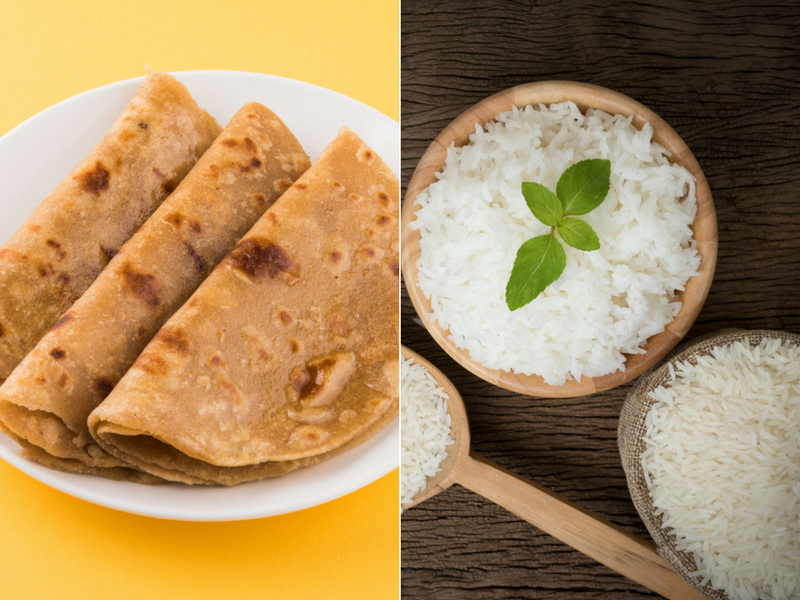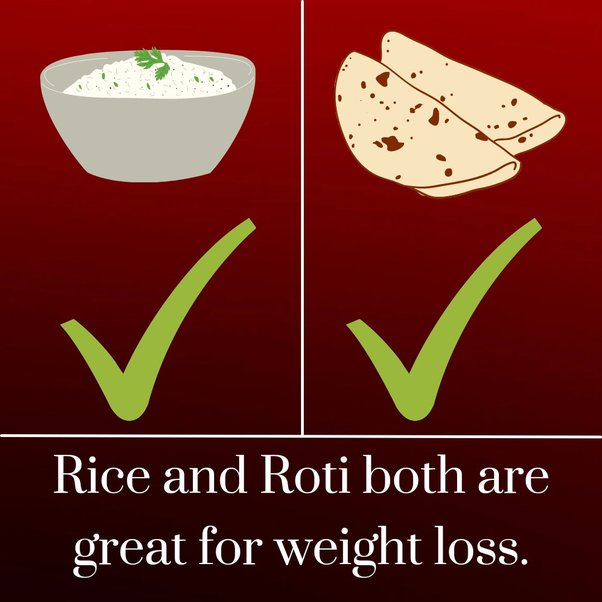For weight loss, chapati is better than rice as it is lower in calories and carbs. When comparing the two, chapati is a healthier option due to its higher fiber content and lower glycemic index.
Fiber aids in digestion and helps you feel full longer, which can assist in weight management. Additionally, chapati is made from whole wheat flour, providing more nutrients compared to white rice. However, portion control and overall diet quality are key factors in weight loss success, regardless of whether you choose chapati or rice.
By incorporating a balanced diet and regular exercise routine, you can achieve your weight loss goals effectively.
Introduction To Diet Choices
Explore the debate between chapati and rice for weight loss. Discover which option aligns best with your dietary goals. Make informed diet choices to support your weight loss journey effectively.
| Factors | Chapati | Rice |
|---|---|---|
| Calories | 1 chapati (30g) – 100 calories | 1 bowl of rice (100g) – 130 calories |
| Carbohydrates | 1 chapati – 15g carbohydrates | 1 bowl of rice – 28g carbohydrates |
| Fiber | 1 chapati – 2g fiber | 1 bowl of rice – 1g fiber |
Nutritional Value Of Chapati
The nutritional value of chapati is quite impressive. It is a good source of carbohydrates, fiber, and protein. The main ingredients in chapati are whole wheat flour, water, and sometimes salt. Chapati is a low-fat, low-calorie food that can aid in weight loss. Additionally, it is rich in dietary fiber, which promotes digestive health and helps in weight management. Moreover, chapati is a good source of energy and provides essential nutrients for the body. It is a healthier option compared to rice for those looking to lose weight.
Chapati offers several health benefits such as regulating blood sugar levels, improving digestion, and promoting a feeling of fullness. It is also a versatile food that can be paired with a variety of dishes, making it a popular choice for many individuals aiming to maintain a balanced diet.
Nutritional Value Of Rice
The nutritional value of rice varies depending on the type. Brown rice is a whole grain, rich in fiber and nutrients. White rice is processed, with the bran and germ removed. Basmati rice is a long-grain variety that is lower in calories and carbs. Jasmine rice is another aromatic long-grain rice. Wild rice is not technically rice but a seed, and it’s high in protein and fiber. In terms of caloric and nutritional differences, rice generally contains more carbohydrates and less protein than chapati. However, chapati is lower in calories and has more dietary fiber. Both can be part of a healthy diet, but portion control and overall dietary balance are crucial for weight loss.

Digestion And Metabolism
Chapati and rice, both play a significant role in digestion and metabolism. The high fiber content in chapati promotes healthy digestion by aiding in regular bowel movements and preventing constipation. It also helps in keeping you fuller for longer, which can aid in weight loss. On the other hand, rice is easily digestible due to its starch content, making it a good option for individuals with sensitive stomachs. However, its rapid digestion may lead to a spike in blood sugar levels, especially white rice. This can have implications for weight management.
How Chapati Affects Digestion: Chapati is rich in dietary fiber, which adds bulk to the stool and helps in maintaining regular bowel movements. This aids in the efficient breakdown and absorption of nutrients, as well as the elimination of waste products from the body.
Rice Digestion Dynamics: Rice, particularly white rice, is quickly broken down into glucose during digestion. This can cause a rapid increase in blood sugar levels, which may not be favorable for weight loss. However, choosing whole grain rice varieties or pairing rice with protein and fiber-rich foods can help mitigate these effects.
Impact On Blood Sugar Levels
When it comes to weight loss, choosing between chapati and rice can impact blood sugar levels. The glycemic index of chapati is lower than rice, which means it causes slower blood sugar spikes. On the other hand, rice has a higher glycemic index, leading to faster increases in blood sugar levels. This can affect weight loss efforts as blood sugar spikes can lead to increased hunger and cravings. Therefore, opting for chapati over rice may be a better choice for individuals looking to manage their blood sugar levels and promote weight loss.
Satiety And Hunger Management
Choosing between chapati and rice for weight loss depends on satiety levels. Chapati provides higher fullness due to its fiber content. Rice has lower fiber, leading to quicker hunger. Including protein with rice can improve satiety. For effective weight loss, focus on portion control and nutrient density.
Incorporating Chapati And Rice Into A Weight Loss Diet
When focusing on weight loss, it is important to consider the nutritional content of foods. Chapati is a good source of fiber and protein, while rice provides carbohydrates for energy.
Portion control plays a key role in weight loss. Balanced meal plans that include chapati and rice can be effective for managing caloric intake.

Conclusion: Making The Right Choice For Weight Loss
Considering personal preferences and lifestyle is crucial in making the right choice for weight loss. Consulting with a dietitian can provide valuable insights and guidance tailored to individual needs. Both chapati and rice can be included in a balanced diet, but portion control and overall calorie intake are key. It’s important to focus on a variety of nutrient-dense foods and maintain a healthy relationship with food. Ultimately, the best choice between chapati and rice depends on what works best for each person’s body and goals.
Frequently Asked Questions
Is Chapati A Better Option For Weight Loss Than Rice?
Chapati is generally considered a better option for weight loss compared to rice. It is lower in calories and carbohydrates, making it easier to control calorie intake. Additionally, chapati is made from whole wheat flour, which provides more fiber and nutrients compared to white rice.
Does Rice Contribute To Weight Gain More Than Chapati?
Rice can contribute to weight gain if consumed in large quantities or in unhealthy preparations. It is higher in calories and carbohydrates compared to chapati. However, portion control and choosing healthier rice varieties like brown rice can help in managing weight effectively.
Can I Include Both Chapati And Rice In A Weight Loss Diet?
Yes, you can include both chapati and rice in a weight loss diet. However, it is important to consider portion sizes and the overall balance of your meals. Incorporating whole wheat chapati and small portions of brown rice along with plenty of vegetables and lean proteins can help in achieving weight loss goals.
Which Factors Should I Consider When Choosing Between Chapati And Rice For Weight Loss?
When choosing between chapati and rice for weight loss, consider factors such as calorie and carbohydrate content, fiber and nutrient density, and personal preferences. Both options can be part of a healthy diet, but portion control and overall meal composition play a crucial role in weight management.
Conclusion
After analyzing the nutritional value of both chapati and rice, we can conclude that both are good options for weight loss. However, chapati is a better option as it contains more fiber and protein than rice, which keeps you full for a longer period of time.
Additionally, chapati has a lower glycemic index, which means it does not spike your blood sugar level like rice. So, if you are trying to lose weight, incorporating chapati in your diet can be a healthy and effective choice.

